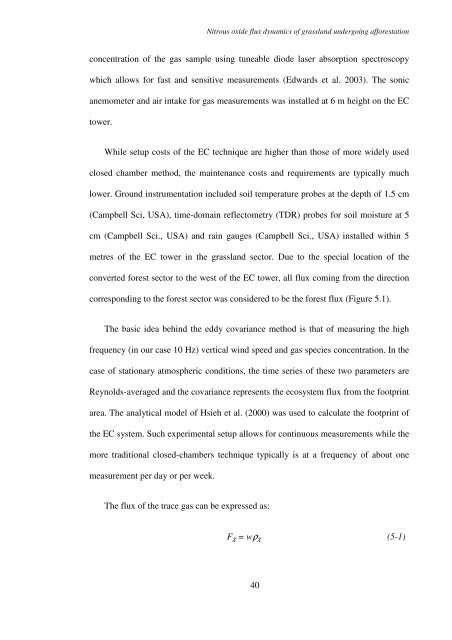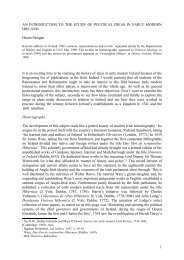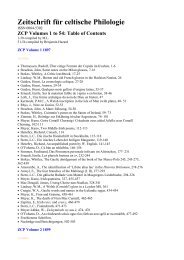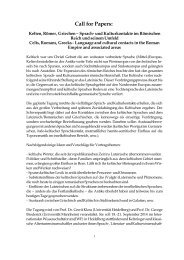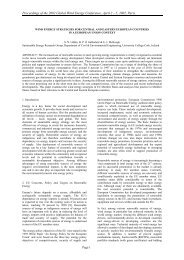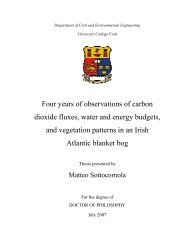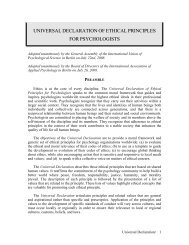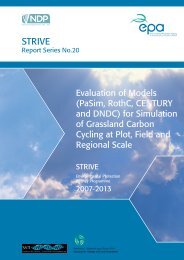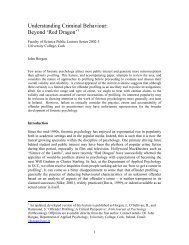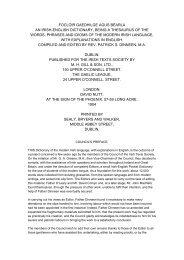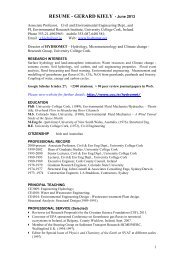PhD Thesis, 2010 - University College Cork
PhD Thesis, 2010 - University College Cork
PhD Thesis, 2010 - University College Cork
Create successful ePaper yourself
Turn your PDF publications into a flip-book with our unique Google optimized e-Paper software.
Nitrous oxide flux dynamics of grassland undergoing afforestation<br />
concentration of the gas sample using tuneable diode laser absorption spectroscopy<br />
which allows for fast and sensitive measurements (Edwards et al. 2003). The sonic<br />
anemometer and air intake for gas measurements was installed at 6 m height on the EC<br />
tower.<br />
While setup costs of the EC technique are higher than those of more widely used<br />
closed chamber method, the maintenance costs and requirements are typically much<br />
lower. Ground instrumentation included soil temperature probes at the depth of 1.5 cm<br />
(Campbell Sci, USA), time-domain reflectometry (TDR) probes for soil moisture at 5<br />
cm (Campbell Sci., USA) and rain gauges (Campbell Sci., USA) installed within 5<br />
metres of the EC tower in the grassland sector. Due to the special location of the<br />
converted forest sector to the west of the EC tower, all flux coming from the direction<br />
corresponding to the forest sector was considered to be the forest flux (Figure 5.1).<br />
The basic idea behind the eddy covariance method is that of measuring the high<br />
frequency (in our case 10 Hz) vertical wind speed and gas species concentration. In the<br />
case of stationary atmospheric conditions, the time series of these two parameters are<br />
Reynolds-averaged and the covariance represents the ecosystem flux from the footprint<br />
area. The analytical model of Hsieh et al. (2000) was used to calculate the footprint of<br />
the EC system. Such experimental setup allows for continuous measurements while the<br />
more traditional closed-chambers technique typically is at a frequency of about one<br />
measurement per day or per week.<br />
The flux of the trace gas can be expressed as:<br />
F χ = wρ χ (5-1)<br />
40


